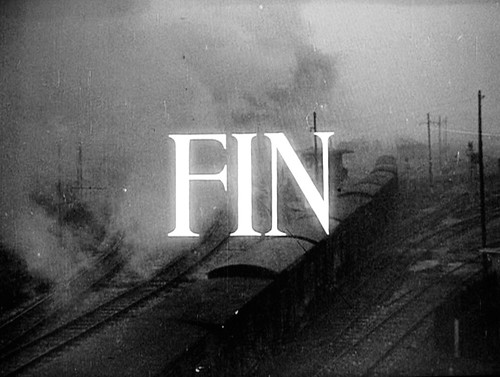 The baijiu industry is filled with brands trying to out-heritage the competition. Go to the baijiu section of any Chinese supermarket and you’re going to see a lot of red and gold, some sweeping calligraphy, a phoenix here and a dragon there. Baijiu manufacturers never tire of telling us how far back in time their brand’s history spans or how long their baijiu has been aged. Never mind that before the state merged small distilleries into regional mega-plants in the 1950s, most of these baijiu brands didn’t exist. The marketing formula is always the same: baijiu = China = ANCIENT.
The baijiu industry is filled with brands trying to out-heritage the competition. Go to the baijiu section of any Chinese supermarket and you’re going to see a lot of red and gold, some sweeping calligraphy, a phoenix here and a dragon there. Baijiu manufacturers never tire of telling us how far back in time their brand’s history spans or how long their baijiu has been aged. Never mind that before the state merged small distilleries into regional mega-plants in the 1950s, most of these baijiu brands didn’t exist. The marketing formula is always the same: baijiu = China = ANCIENT.
And why not? Baijiu drinkers are, after all, old. One of the strangest aspects of China’s drinking culture is that consumption tends to bear a direct correlation to the age of the drinker. In other parts of the world people tend to do their heaviest drinking in their twenties and thirties, gradually reigning things in as things like careers and children exact their fun tax. Not so in China, where binge drinking is a professional requirement and the path to success is lubricated with sorghum hooch.
So what should we make of the current trend in which China’s youth seem to be turning away from baijiu? The evidence is mostly anecdotal, but in my travels around China, most young professionals either told me they don’t like to drink or that they prefer foreign alcohol (even some who worked in the baijiu business!!!). Baijiu is what their parents and grandparents drink, not what you find at hip, young nightclubs and KTVs. Yes, baijiu drinking has always been an old man’s game, but today’s old men weren’t drinking Johnny Walker and Heineken when they were young. Will the old drinkers of tomorrow be drinking Maotai or Moët? Only time will tell.
There’s clearly a market opening for someone that can convince China’s younger drinkers to get back on the baijiu bandwagon, but as long as Chinese spirit manufacturers continue to rake in record-breaking profits, none are going to do much soul-searching. Thus it should come as little surprise that the first attempt at making the baijiu of tomorrow comes from a new player with an outsider’s perspective.
Vin & Spirit, the Swedish spirits company responsible for Absolut, entered the baijiu market in 2007 though a joint-venture with the Sichuan-based Jiannanchun. When Vin & Spirit was bought out by French liquor bohemoth Pernod Ricard (Jameson, Chivas Regal, etc.) in 2007, the new JV, called Tianchengxiang (or TCX), was also absorbed. Earlier this year they released their first two baijius, the eponymous Tianchengxiang (an excellent mixed-aroma baijiu reviewed here) and Purfeel (pronounced “pure feel”). While other baijius on the market aim to embody the past, Purfeel, whose slogan literally translates “modern baijiu,” is a different beast altogether.
The most striking thing about the brand’s first iteration, Purfeel 21, is its alcohol content. At 21% alcohol by volume – a not-so-subtle nod to the 21st century – it is less than half the strength of the average baijiu and one of the weakest on the market. The packaging, a sky-blue box with a simple, yet contemporary design is another departure from the mainstream. The intent is twofold: to appeal to underserved demographics (young professionals, especially women) and to create a mixable baijiu suitable for alternative venues (bars and nightclubs).
I had a bottle of Purfeel 21 that had been burning a hole in my liquor cabinet for ages and decided to break it take it for a test run at a house party last weekend. I poured a round for a mostly foreign group of drinkers and asked for their input. Most agreed that it was alright and were surprised by its lightness. For me, the taste was fine, but this watered-down baijiu tasted a little, well, watery. I tried to pick it up with a slice of lemon and some sprite and, though it was a serviceable concoction, the strong-aroma didn’t blend too well. I leave baijiu cocktails in more capable hands than mine.
Hard-core baijiu junkies aren’t going to have much use for Purfeel 21, but that’s not really the point. The fact that it got a neutral to positive response among foreign drinkers, a group that usually makes gagging noises when given baijiu, indicates that it might just be the transformational spirit it’s intended to be. Tianchengxiang is taking a risk by venturing into new territory, but I hope this risk will be rewarded and that other distillers will follow suit.
As I’ve written elsewhere this is the perfect baijiu for beginners to acquire the taste without being bowled over by it. Fence-sitters should give it a shot. As for me I’m looking forward to Purfeel 36 and 48, which I’m told will be coming soon.


Pingback: Today's China Readings August 15, 2012 | Sinocism
Pingback: Enjoy Moutai Online | Buy Buy China
Pingback: Withdrawal symptoms: China’s rice wine market | Buy Buy China